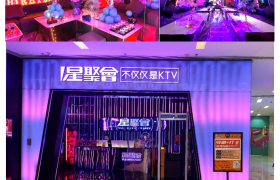“After disruption at the onset of the pandemic, Ipsen Consumer Healthcare performed well in its recovery in China. We have seen more than 20 percent growth in China this year, surpassing initial goals.”
At Ipsen China Consumer Healthcare headquarters, the Beijing winter sunshine floods the room. Ipsen China General Manager Alan CHEN was satisfied and happy when asked about the overall performance in the Chinese market in 2021.
Since the establishment of the “Hospital and Retail” dual channel marketing strategy in 2016, Ipsen has expanded its market beyond public hospitals through its star product Smecta. Under the pressure generated by volume-based procurement (VBP) and other policies, many MNCs have begun exploring the out-of-hospital market. As an industrial forerunner, Ipsen will continue to keep its competitive advantage in that regard.
“Our sales are driven equally by hospital and retail business. Retail is not only the formats Ipsen enjoys doing but also a must-do” said Alan CHEN, who explains that related business models should be altered accordingly by these two channels with different characters. “We are not covering the hospital channel while incidentally trying to do some retail business—we are paying comparable attention to both channels.”

Alan Chen, General Manager of Ipsen China, CHC
Smecta’s out-of-hospital success helps to secure Ipsen’s position in the context of VBP. The coming challenge and opportunity for this multinational company to address is how to accelerate its Consumer Healthcare business by leveraging its brand value.
01 Ipsen’s Retail DNA
In the interview, Alan CHEN mentioned one phrase several times, “Retail DNA”.
“Our team has strong retail DNA, and Ipsen is one of the few multinational pharmaceutical companies with an equal split between hospital and retail promotion. Ipsen’s growth is not only in hospitals, but instead has remained split between hospital and retail channels throughout the company’s maturation,” Alan said to the Healthcare Executive.
IQVIA data shows that retail pharmacy drug sales have increased year by year since 2015, reaching a value of RMB 414.9 billion in 2019, accounting for about 23 percent of all sales channels, with an average growth rate of 7 percent in the past five years.
Alan candidly said that at the beginning of Ipsen’s dual-channel marketing strategy’s launch in 2016, the company’s retail team was understaffed. Only six months later, the size of the team grew to over 100 people, indicating the rapid advancement of Ipsen and Smecta in the retail market.
“Before VBP, Smecta’s sales through the public hospital channel in China was as high as 60 percent of total sales. Although this figure is now reduced to only a few tenths of a percentage point, Smecta’s retail sales are growing, which can make up for its lower sales in the hospital channel,” said Alan, who noted that in recent years, Smecta has maintained a growth rate of nearly 20 percent in the retail channel. In addition, several other of Ipsen’s prescription drugs have also maintained considerable growth rates in the retail market every year.
As for what Ipsen has done right in the process of capturing the out-of-hospital market, Alan said that first of all, having the right strategy is critical. Only the desire to explore the out-of-hospital market can foster the best strategies for cooperation and further drive Ipsen to embrace the whole market.
“In recent years, many retail pharmacies are working hard to achieve transformation. Pharmacies are no longer just a place to sell drugs as they were in the past. Therefore, we will provide a variety of services for these pharmacies, empowering them with the capabilities to provide more value-added services to consumers. In addition, there are now many more channel options than before, such as B2B, O2O, and internet hospitals, etc. We are interested in all such channels,” Alan said.
The IQVIA report’s analysis shows that as the country vigorously promotes VBP and reduces pharmaceutical prices in hospitals, a growing number of drugs produced by domestic companies will enter hospitals. This trend also indirectly provides an opportunity for foreign pharmaceutical companies to shift their strategies and heighten out-of-hospital market demand. Most manufacturers who did not participate in VBP bidding or failed their bids have shifted their tastes to the out-of-hospital channel, further promoting the retail market’s development.
In this regard, Alan believes that the retail channel is indeed a key strategy to make up for losses in the hospital market due to the impact of VBP. Patients shift in purchasing habits is not just making up for the loss of hospital market share, but also giving us a new engine to reach greater retail-side results and achievements.”
According to IQVIA data, hospital sales declined significantly in 2020, with a 10.9 percent year-on-year decrease, due to the impacts of COVID-19 and VBP. Retail was least affected by the pandemic among the three major channels (hospitals, retail, and township communities), experiencing a 2.2 percent increase. The normalization of epidemic prevention and control has changed consumer behaviors and liberalized online-drug prescription rules and sales policies. In these circumstances, online pharmacies developed rapidly in 2020, with a year-on-year growth of as much as 66 percent.
The out-of-hospital channel in China’s pharmaceutical market is expected to grow at a rate of 7.8 percent over the next five years and to be higher than the hospital channel. Main growth points include: Prescription outflow from hospitals, with purchases instead made in the out-of-hospital market due to stricter requirement for drugs entering hospitals based on the pricing pressure generated by medical insurance negotiations and VBP; The increasing proportion of consumers purchasing drugs online given that the pandemic has encouraged consumers to become accustomed to purchasing drugs out-of-hospital, while at the same time, “Internet+ healthcare” and online prescriptions have developed; The online and offline sale’s scale effect is emerging as offline pharmacies are further integrated under the impetus of capital.
Under this development trend, as an early player in the retail channel, how will Ipsen continue to consolidate its competitive advantage in the market?
In Alan’s view, for Ipsen, in addition to its own retail DNA, the company’s gastrointestinal-focused product line will also help it solidify its competitiveness in both in-hospital and out-of-hospital market. “Ipsen has always focused on the gastrointestinal field, including through its cooperation with Shanghai Pharma Holding and Baheal Pharmaceutical Group, and it hopes to continue to focus on this field with the help of our partners,” he said.
02 Smecta is not just Smecta
For Ipsen, the maximum value of its retail DNA has been transferred to its star product Smecta in the Chinese market over the past few years. At present, Smecta has reached more than 250,000 pharmacies in the country. Alan said that next year, Smecta aims to continue its double-digit growth in the retail channel and increase its market share.
“With a history of 47 years globally and 30 years in China, it is hard to imagine a product that has been on the market for so long and is still in its first-line treatment position, which is a testament to its recognition among doctors and consumers.”
Since Alan assumed the position of the GM of Ipsen China in 2016, Smecta’s in-hospital market share at 60 percent before the beginning of VBP, while the retail market has experienced fast growth after VBP. Alan admits that the hospital, trade, and retail teams have never given up on this product’s heritage and must make it a success.
Can the success of Smecta, Ipsen’s absolute gold medal product, be replicated?
Alan said that if a product has a wide range of patients and can be recognized by many consumers at the same time, it may be possible to have a product follow Smecta’s success.
“When many people hear the brand name Smecta, they think of good efficacy, safety, and trustworthiness. This is the so-called brand effect.” Clearly, in Ipsen’s strategic plan, Smecta is no longer just a product for treating diarrhea, it is a brand in itself, and what Ipsen will do next is to use this brand to accelerate consumer trust in new products after bringing them to market. “The reputation of Smecta has gone beyond Ipsen itself, and more importantly, it can also be an important platform to drive the success of other new products from Ipsen in the future,” Alan said.
At the end of 2020, Ipsen China announced a strategic cooperation agreement with K-Max, a health food brand of the US company, in relevant channels to expend the massive healthcare field. The choice to introduce health food brands is a part of Ipsen’s Consumer Healthcare strategy.
Alan said that this year, Ipsen started to make an effort to pursue a Consumer Healthcare strategy and engage in health food, together with a new sales strategy for some existing prescription drugs. The interaction between pharmacies chains and internet hospitals along with Smecta’s brand effect can accelerate reaching Ipsen’s goal of interacting and cooperating with more partners.
Under the framework of Ipsen’s Consumer Healthcare business, which includes prescription and OTC drugs as well as health food, it has become more and more important for Ipsen to make a concerted strategic effort as the number of its products increases.
Alan believes that for pharmacy chains, more products from one company are very embraced, and that the more products there are, the more dimensions of cooperation will be available. In his opinion, the current products of Ipsen Consumer Healthcare have not yet reached saturation in the market and still have room to be further developed. The company is still working on how to help retail teams get more products in the future, and there is still plenty of room to do more work with partners.
Regarding what kind of products to have, Alan said that, first of all, Ipsen remains focused on the gastrointestinal as a key product field, and that secondly, as long as it is a type of health food, Ipsen is willing to try it, including products such as probiotics.
“Of course, it is not that there are no opportunities for non-gastrointestinal and health food-related cooperation, as we are also interested in many proprietary Chinese medicines. So long as there is a good opportunity, I think we are ready to try different areas. The thinking logic of Consumer Healthcare is to try to get out of our comfort zone, just like our retail team and their work with health food—we are prepared to go from nothing to something in a variety of domains,” Alan told Healthcare Executive.
In addition, accelerating health food’s introduction to consumers through “branding” is another direction Ipsen is considering. Alan said that branding is one important strategy for retailing, and Ipsen is not resistant to labeling itself. As long as there are good products that have good quality, he would like to try to cooperate.



